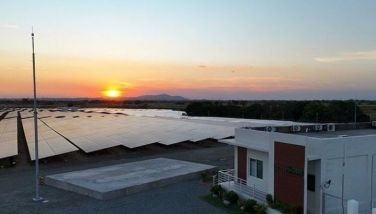Philippines in top 3 fastest growing economies in 2023 and 2024

The IMF released the World Economic Outlook (WEO) April 2025 last Tuesday. I downloaded the database Excel files, I checked the numbers on GDP size both in current values and purchasing power parity (PPP) values and GDP growth. When comparing countries’ economic size, I prefer to use the PPP because valuation is adjusted for standard of living of countries.
In 2024, there were 53 countries and economies which have at least $500 billion GDP size in PPP values. Comparisons below are limited to those 53 economies and here are the results for 2024:
One, in GDP size at PPP values, China remains number one with $38.15 trillion, followed by the US with $29.18 trillion, India with $16.19 trillion. Fourth to sixth are Russia, Japan and Germany with $6 trillion to $6.9 trillion.
Two, in current values the US remains number one with $29.18 trillion, followed by China with $18.75 trillion, third to fifth are Germany, Japan and India with $3.9 trillion to $4.7 trillion.
Three, among the ASEAN-6 GDP size at PPP values, Indonesia is 8th with $4.66 trillion, Thailand is 22nd with $1.77 trillion, Vietnam is 25th with $1.65 trillion, Malaysia is 30th with $1.38 trillion, Philippines is 31st with $1.37 trillion, Singapore is 34th with $910 billion.
Four, in GDP size at current values, Indonesia is 16th, Singapore is 27th, Thailand is 30th, Philippines is 33rd with $462 billion, Vietnam is 34th, Malaysia is 37th.
Five, in GDP growth, the fastest economies in the world in 2023 were India with 9.2 percent, Bangladesh with 5.8 percent, Philippines is third with 5.5 percent, China with 5.4 percent, Turkey and Vietnam with 5.1 percent. All Asians except Turkey.
Six, the fastest growing economies in 2024 were all Asians: Vietnam with 7.1 percent, India with 6.5 percent, third is Philippines with 5.7 percent, then Malaysia with 5.1 percent, China and Indonesia with 5.0 percent.
Seven, the worst economic contraction (or negative growth) in 2023 were Ireland with 5.5 percent, Argentina with 1.6 percent, and Austria with 1.0 percent. Those with smaller contraction were Germany, Czech Republic, Sweden, Pakistan, Peru, Saudi Arabia.
Eight, three countries still suffered economic contraction in 2024: Argentina with 1.7 percent, Austria with 1.2 percent, and Germany with 0.2 percent. So two Europeans suffered back to back contraction, Austria and Germany.
Nine, the average growth the past four years 2021-2024, three largest economies of G7 – US, Japan and Germany – have mediocre growth: 3.6, 1.3 and 1.1 percent respectively. In contrast, the three largest economies of BRICS – China, India, Russia – have growth of 5.5, 8.2 and 3.2 percent, respectively.
Ten, average growth also in 2021-2024 in ASEAN 6 were: Philippines 6.1 percent, Vietnam 5.8 percent, Malaysia 5.2 percent, Singapore 5.0 percent, Indonesia 4.8 percent, Thailand 2.2 percent.
In 2020 though, the Philippines has the worst contraction in Asia with 9.5 percent, also our worst economic performance since World War II. The Philippines has the worst lockdown dictatorship policies in Asia that year. So the high growth in 2021-2022 were merely recoveries from the deep contraction of 2020.
Nonetheless, the Philippines has recovered and it should be a lesson to us – that killing economic freedom is wrong, that the people’s right to work and do business, right to mobility should be non-negotiable.
The Philippines economic team led by the DOF, DBM and NEDA (now DEPDev) is successful in providing policy directions to have fast growth, especially with recent economic liberalization laws including the CREATE MORE law that cut corporate income tax from 25 percent to 20 percent, and the PPP Code.
The big challenge now for the economic team is how to significantly reduce our public debt, which significantly expanded from only P8.22 trillion in 2019 to P10.25 trillion in 2020, P14.96 trillion in 2023 and P16.40 trillion in 2024. High debt means high interest payment, P763 billion in 2024 alone or equivalent to P2.1 billion per day. Again, interest payment alone, principal amortization not included yet.
There should be significant spending cut, subsidies and freebies including elegant pension system for military and uniformed personnel (MUP), all at taxpayers’ burden.
As former US president Ronald Reagan said something like “the success of a welfare program is how many people are exiting it, not added to it.” Our subsidies and freebies are permanent with no timetable. Meaning burden to taxpayers and businesses. It is time to discontinue this to enable us to have meaningful fiscal consolidation, so that public resources are better spent on useful infrastructure that help improve our people’s productivity and mobility.
- Latest
- Trending































